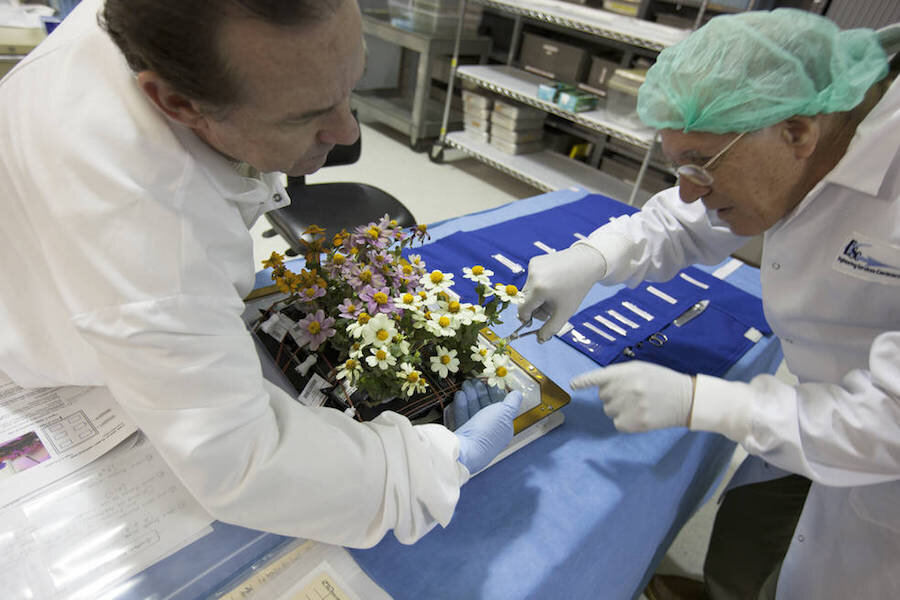NASA's green thumb: Why astronauts harvested zinnia plants in space
Loading...
From space to soil, NASA is showing how having a green thumb can help the future of space travel.
On Valentine’s Day, astronaut Scott Kelly harvested plants growing aboard the International Space Station (ISS). Similar plants of the same variety were harvested by NASA staff on Earth days before, using the same methods. The hope is that comparing the space and Earth grown plants side-by-side can reveal more about how space affects plant growth.
The harvesting is part of ongoing NASA project Veggie. The project is the “biggest plant/flower experiment to fly on the station,” according to the NASA press release. The space agency is pushing to better understand the potential of space farming, as sustainable food production looks increasingly vital for deep-space missions.
"If we're ever going to go to Mars someday, we're going to have to have a spacecraft that is more self-sustainable in regards to its food supply, as well as other things," said Mr. Kelly said in August.
Kelly’s view was echoed by Gioia Massa, the NASA Kennedy payload scientist for Veggie, on Feb. 11 in the press release.
“We need to learn a tremendous amount to help develop more robust sustainable food production systems as NASA moves toward long-duration exploration and the journey to Mars.”
The food practices used by NASA will need to be updated if the space agency wants to undergo longer missions, according to a study from The National Academies of Sciences, which The Christian Science Monitor reported previously.
An average round trip between Earth and Mars, including a 20-month stay on the red planet, could take three years. NASA also plans on sending food ahead of any manned mission. As a result, food would need to stay edible for five years, but current NASA guidelines aim for food that can last two years in storage.
Growing food in space could be the solution, or part of the solution, to the food storage puzzle. But space farming comes with its own unique set of problems to overcome, as demonstrated by the Hollywood blockbuster, “The Martian.”
"We have recently seen the challenge of growing food in space in the movie 'The Martian,'" Nancy Turner, a nutritional physiologist at Texas A&M University, told Inside Science. "Although it was a fictional account, it does caution us about some problems and holds out hope for the opportunities."
Unlike fictional astronaut Mark Watney in “The Martian,” NASA is working hard to discover and overcome the obstacles to growing food in space before it’s needed.
The space-grown zinnia plants harvested on Valentine’s Day had already experienced their own space trials, like a brief encounter with fungus. NASA scientists hope that by comparing the space zinnias to Earth grown zinnias, other differences will be discovered.
At the Kennedy Space Center and the ISS, the zinnia plants were carefully cut and prepared for storage. Some of the oldest plants were harvested for seeds, which will be tested for regrowth potential. Others were frozen to undergo a future microbial assessment. Another group was pressed.
Any remaining plant material from the space zinnias, including the plant pillows and any water samples, will be frozen and shipped to Earth. They will be compared to the Earth-grown zinnias, side-by-side. Ms. Massa said in the press release the zinnia crop will give valuable information to prepare for growing longer duration and fruiting crops onboard the ISS in the future.
The zinnia plant harvest is already demonstrating a potentially sustainable cycle of food production that could be used in the future.
“It’s a good example of starting with seeds and ending with seeds, which is what you need to sustain crop growth,” NASA mechanical engineer and Veggie expert Nicole Dufour said in the press release.






